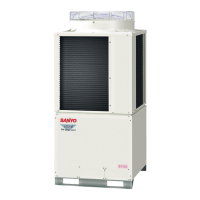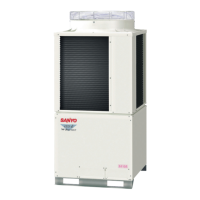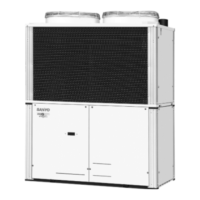Always check the gas den-
sity limit for the room in
which the unit is installed.
1-10. Check of Limit Density
When installing an air conditioner in a room, it is neces-
sary to ensure that even if the refrigerant gas acciden-
tally leaks out, its density does not exceed the limit
level for that room.
If the density could exceed the limit level, it is neces-
sary to provide an opening between the unit and the
adjacent room, or to install mechanical ventilation
which is interlocked with the leak detector.
(Total refrigerant charged amount: kg)
(Min. indoor volume where the indoor unit is installed: m
3
)
≤ Limit density 0.3 (kg/m
3
)
The limit density of refrigerant which is used in this unit
is 0.3 kg/m
3
(ISO 5149).
The shipped outdoor unit comes charged with the
amount of refrigerant fixed for each type, so add it to
the amount that is charged in the field. (For the refriger-
ant charge amount at shipment, refer to the unit’s
nameplate.)
1-11. Installing Distribution Joint
(1) Refer to “HOW TO ATTACH DISTRIBUTION
JOINT” enclosed with the optional distribution joint
kit (APR-RP160AG).
(2) In order to prevent accumulation of refrigerant oil in
stopped units, if the main tubing is horizontal then
each branch tubing length should be at an angle that
is greater than horizontal. If the main tubing is verti-
cal, provide a raised starting portion for each branch.
(3) If there are height differences between indoor units
or if branch tubing that follows a distribution joint is
connected to only 1 unit, a trap or ball valve must be
added to that distribution joint. (When adding the ball
valve, locate it within 40 cm of the distribution joint.)
(Consult with SANYO separately concerning the
ball valve.)
If a trap or ball valve is not added, do not operate
the system before repairs to a malfunctioning
unit are completed. (The refrigerant oil sent
through the tubing to the malfunctioning unit will
accumulate and may damage the compressor.)
Minimum indoor volume & floor area as against the
amount of refrigerant is roughly as given in the follow-
ing table.
Min. indoor floor area
Min. indoor volume
directed upward.

